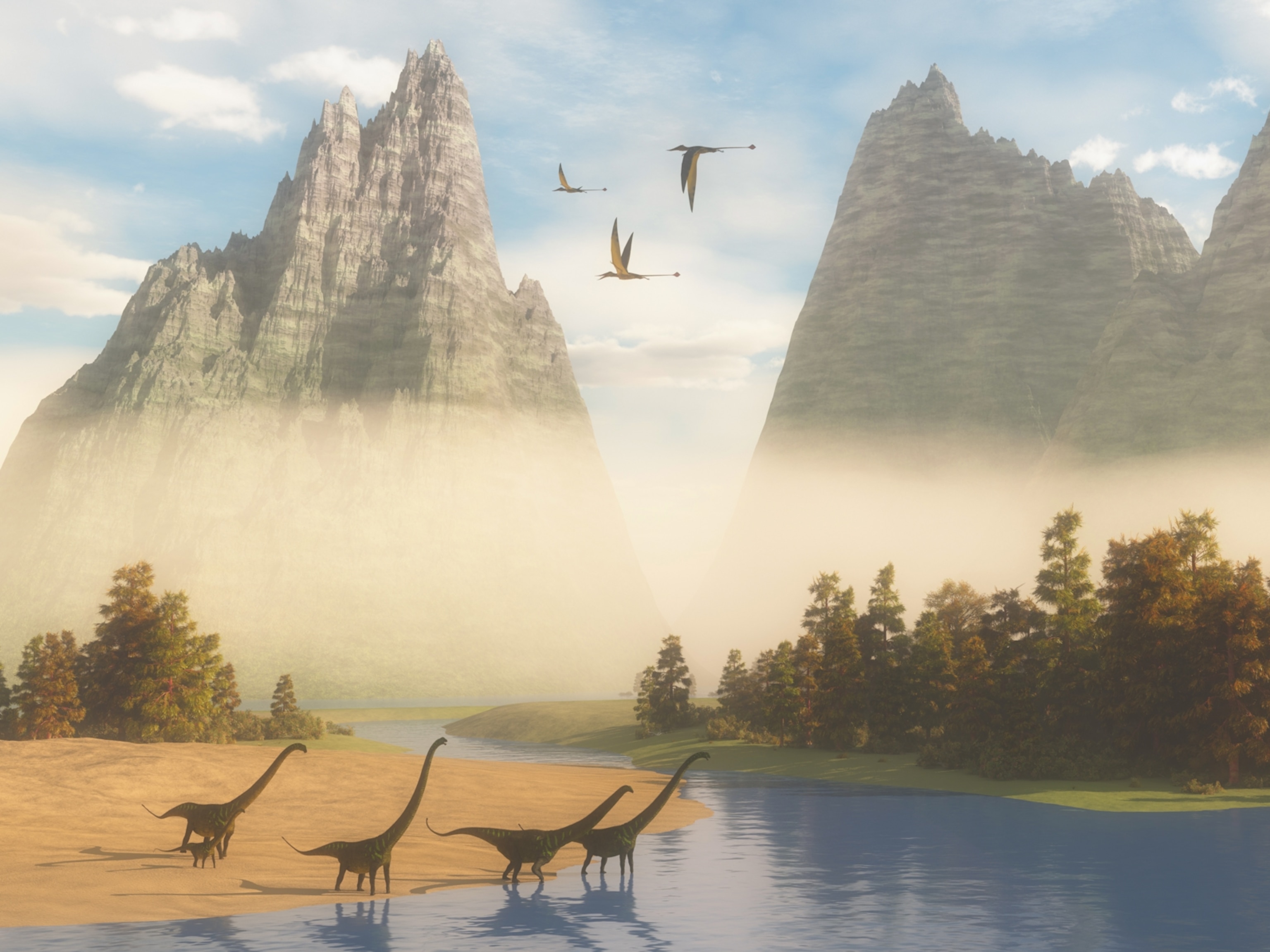The Carboniferous period, part of the late Paleozoic era, takes its name from large underground coal deposits that date to it. Formed from prehistoric vegetation, the majority of these deposits are found in parts of Europe, North America, and Asia that were lush, tropically located regions during the Carboniferous.
In the U.S., scientists divide the Carboniferous into two parts: the earlier Mississipian (359.2 million to 318.1 million years ago) and the later Pennsylvanian (318.1 million to 299 million years ago).
During the Mississipian, Euramerica, or Laurussia, which included North America, northern Europe, and Greenland, remained separate from the larger, cooler supercontinent of Gondwana to the south. To the east, parts of Asia, including China, were surrounded by warm oceans. While Gondwana became progressively colder as it began another poleward migration, the tropical landmasses remained wet and humid.
The Coal Age
Carboniferous coal was produced by bark-bearing trees that grew in vast lowland swamp forests. Vegetation included giant club mosses, tree ferns, great horsetails, and towering trees with strap-shaped leaves. Over millions of years, the organic deposits of this plant debris formed the world's first extensive coal deposits—coal that humans are still burning today.
The growth of these forests removed huge amounts of carbon dioxide from the atmosphere, leading to a surplus of oxygen. Atmospheric oxygen levels peaked around 35 percent, compared with 21 percent today. It also may explain the giant creepy-crawlies that now emerged—the size reached by insects and similar creatures is thought to be limited by the amount of air they are able to breathe.
Deadly poisonous centipedes some six feet (two meters) in length crawled in the company of mammoth cockroaches and scorpions as much as three feet (one meter) long. Most impressive of all were dragonflies that grew to the size of seagulls. One exquisitely detailed fossil of a dragonfly that died 320 million years ago shows it had a wingspan of 2.5 feet (0.75 meters).
How insects first became airborne remains a mystery. Theories suggest their wings may have developed from structures used to regulate temperature (such as by catching the sun's rays to heat up), or perhaps they evolved from brightly colored signals used to attract mates and ward off rivals. Another idea is that insect wings developed from appendages used to glide between trees in the Carboniferous forests.
Amphibian Evolution
Amphibians were also growing in size and diversity. There were predatory species that resembled modern-day crocodiles. Armed with vicious teeth, they reached lengths of almost 20 feet (6 meters). Some amphibians developed a thicker, scaly skin, solving the problem of them drying out if away from water too long. They also reduced their reliance on wetland habitats through a crucial evolutionary adaptation known as the amniote egg. This protected the embryo inside with a fluid-retaining membrane while still allowing in air. In time, the earliest reptiles appeared. Identified from remains found inside fossilized Carboniferous tree stumps, they were small, agile, lizard-like animals.
Africa collided with eastern North America in the late Pennsylvanian, an event that formed the Appalachian Mountains. Vast coal swamps stretched across the lowlands to the west of the rising mountains.
By the end of the Carboniferous, the Earth's landmasses were moving toward a single, global supercontinent called Pangaea.















